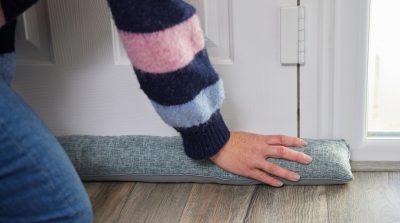When it comes to investments, the property market is one of the most popular options. Not only do you own a property that could appreciate in value (if the market is right), but it can also provide you with a regular income too. However, what if your new investment venture also happens to be your first time dipping your toes into the rental market?
For those unsure how buy-to-let mortgages work or what the process involves, we’re here to shine a light on it.
What is a buy-to-let mortgage?
Unless you’re buying with cash, you’ll need a buy-to-let mortgage to cover the cost of your purchase. Traditional mortgages are only suitable if the borrower is living in the property in question. Renting out a property that’s been financed with a standard residential mortgage could leave you breaking the terms of your mortgage agreement, unless prior consent has been gained from your lender.
A buy-to-let mortgage works in a similar way to a residential mortgage in that it’s a loan that enables you to borrow a sum of money to pay for a property. This money is then paid back, plus interest, in monthly instalments.
Check you qualify
There are certain criteria that applicants are expected to meet when applying for a buy-to-let mortgage. Some lenders, for example, will only lend to borrowers who already have a residential mortgage in the UK, although there are some who will lend to first-time buyers who intend to use their first property as a rental income.
Credit score is also a factor when applying for a buy-to-let mortgage, especially if you have any credit issues. Take a look at this Bad Credit Mortgage Guide from Online Mortgage Advisor, that explains which credit issues lenders will accept, how much deposit you’ll need, and other factors that could affect eligibility.
There are typical age limitations on applications too – for example, some lenders will only lend to prospective landlords over the age of 25, while in most cases there will be a maximum age limit of when the mortgage is due to end. So, for example, if the age limit is 80 years of age for the end of the term, applicants will need to be 55 or younger to qualify.
In most instances, there will also be a minimum personal income, which is usually around £25,000 p/a. Most lenders will require the property to be let as a single unit – to let on a per room, multiple occupancy basis, you’ll need a specific type of buy-to-let mortgage.
Get the finances in order
You’ve found the ideal property in the perfect location, and you’ve had your offer accepted. The next step is financing your purchase. Buy-to-let investors typically need a minimum of 20% of the property purchase price as a deposit, although many lenders will expect 25% or more, and some may even require as much as 40%.
This varies considerably with residential mortgages where the deposit can be as little as 5%. It may seem like a high figure but remember that the more you can put down as a deposit, the better your interest rates will be and the higher the chance your application will be accepted.
Assess how much you can borrow
Buy to let lenders assess the affordability based on the rental income the property is likely to generate rather than your income from your job, as is typical of a residential mortgage. There are several factors that can influence this, from the size and type of property you’re purchasing, to the location and the buoyancy of the current rental market.
Many lenders use interest cover ratios (ICRs) as part of their affordability assessments for borrowers, which calculates how much profit a landlord is expected to make. It’s the ratio of a property’s rental income which covers the mortgage each month and is tested at a representative interest rate, which is usually 5.5%.
Consider the repayments
Most residential mortgages are set on a repayment basis, but with a buy-to-let mortgage, you’re likely to be offered your loan on an interest-only basis. This means that your monthly payments only pay off the mortgage interest each month, not the capital of the loan. While this does provide you with cheaper payments, you’ll still owe the capital amount at the end of the mortgage term.
When taking out the loan, consider how you’ll repay the capital once the term comes to an end. Some choose to sell the property to pay off the loan amount, or you may save a proportion of your profits each month to pay the capital in the future.
Factor in additional costs
There’ll be the usual property purchase costs, such as surveys and land and buildings transaction tax (LBTT), along with your solicitors’ fees. However, when you’re purchasing a buy-to-let, you also need to think about the legal and tax obligations of the property – for example, the income you receive is taxable and you need to declare it to HMRC as part of a Self Assessment tax return.
You’ll need to ensure that you have relevant property insurance (landlord insurance is often advisable to protect you fully) and if you’re using a managing agent rather than managing the property yourself, there will be these fees to think about as well.
Final thoughts
Buying a property as an investment is a long-term strategy for increasing your wealth and building assets, but there’s a lot that goes into making a sound investment decision. From the location you choose to the costs of repairing and refurbishing the property once you’ve bought it and the likelihood of being able to find tenants, purchasing a rental property is something that shouldn’t be taken lightly.
However, if you’ve run the figures and determined that it’s the right call for your situation, it can be a great way to boost your income. With the rental market in a positive state right now, it’s a great time to invest in buy-to-let properties, as more people are seeking the flexibility that a rental can offer.











